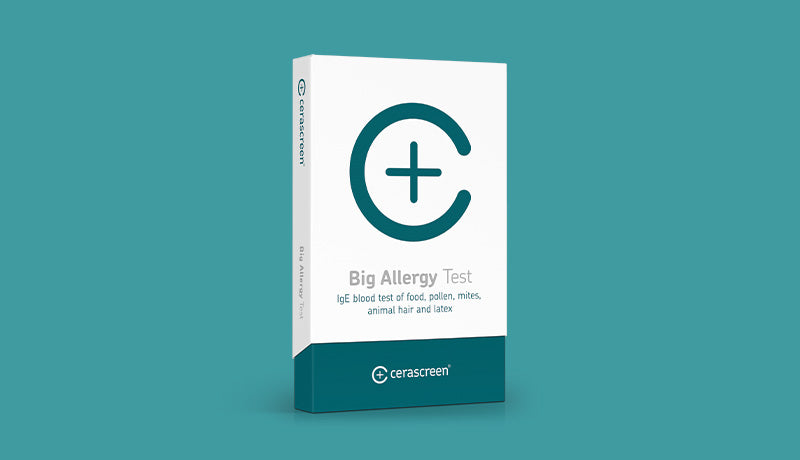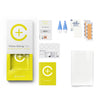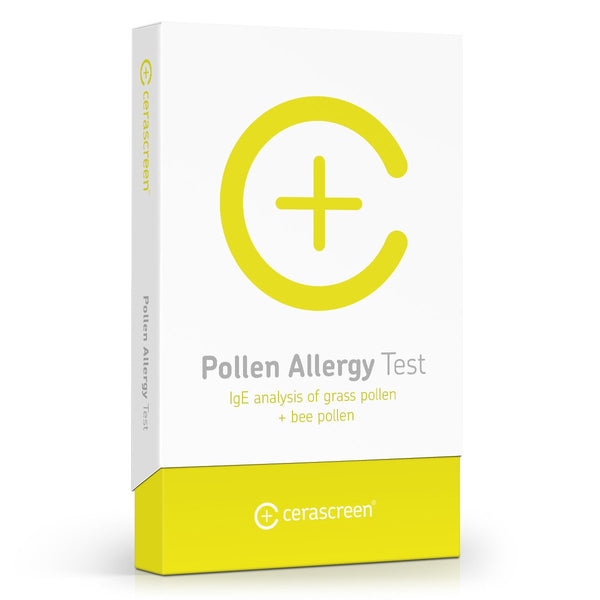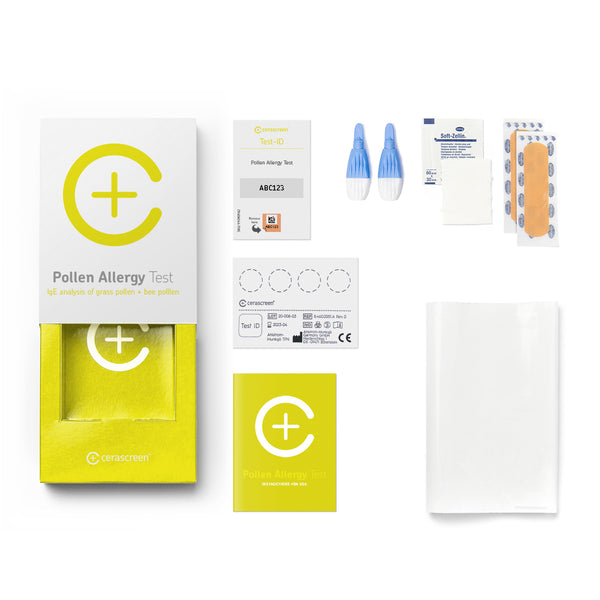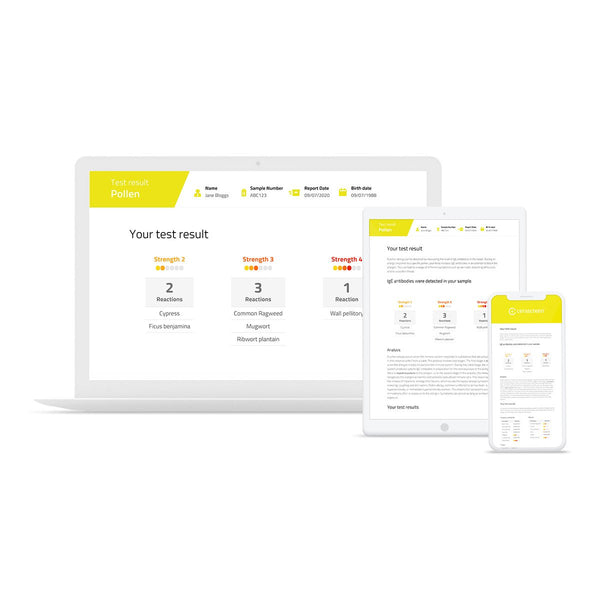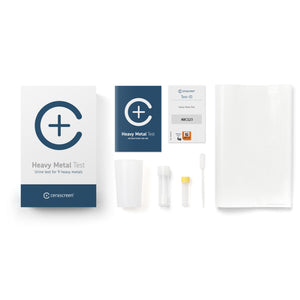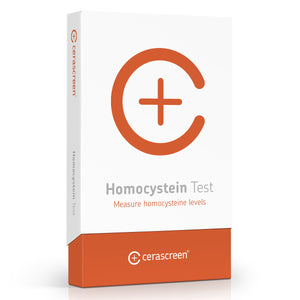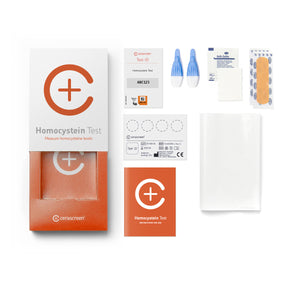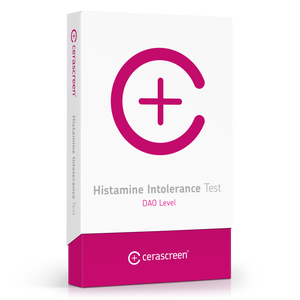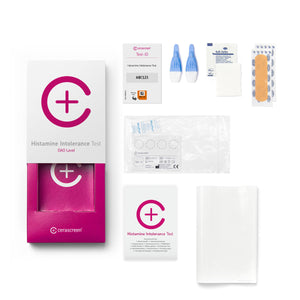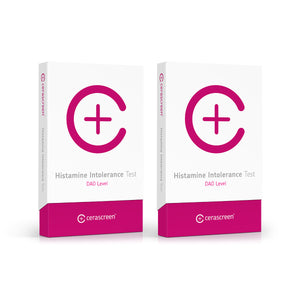product_id = 4998046220347variant_id = template_name =
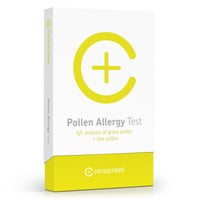
Pollen Allergy Test
About the test
Caution, pollen! When it's grass and flower pollen season, around one-fifth of UK residents suffer from a runny nose, sneezing and red eyes.
The cerascreen® Pollen Allergy Test gives you an initial indication of the exact pollen to which you are allergic. It is a home health test that allows you to better prepare for the pollen season and try to prevent the unpleasant symptoms ahead of time.
Pollen Allergy Test
- Conduct an IgE analysis for the 16 most common pollen allergens
- Obtain a blood sample easily and conveniently at home
- Receive a professional laboratory analysis after a few days
- Get recommendations and tips that you can use immediately
Benefits of the Pollen Allergy Test
Do you want to get through the pollen season without issues? Then it may be useful to know which pollen you are allergic to. If you know more about your allergies and avoid allergens, you will relieve your symptoms and reduce the risk of secondary symptoms as potential consequences, such as allergic asthma in the long run.
You obtain your sample for the cerascreen® Pollen Allergy Test at home – there's no need to spend hours waiting at the doctor's surgery! The test is a blood test – that is, a small prick of your finger, instead of a prick test (skin test) at the doctor's office, which requires many small incisions on the skin, frequently resulting in days of redness and itching.
Benefit from our expertise:cerascreen® is the market leader in Europe for medical sampling and send-in kits , with eight years of experience in the development and evaluation of tests. We have developed more than 50 approved send-in test kits (medical products), evaluated 250,000 samples and serve 19 countries.

Result of the Pollen Allergy Test
As soon as your sample has been evaluated, you will receive your results report via the My cerascreen®app or your user account on our website. You can easily view the report on your smartphone, tablet or computer and read it in printed form, if required.
The laboratory analysis determines the concentration of specific IgE antibodies against certain grasses, herbs and flower pollen in your blood. Learn what you can do to relieve your symptoms during the pollen season with the help of our recommendations. Extensive health information explains the background of pollen allergies, cross-allergies and much more.
Frequently asked questions about Pollen Allergy Test
Why should I test for pollen allergy?
Every year during the pollen season, an increasing number of people suffer from sneezing, sniffling and reddened eyes. A pollen allergy is not only annoying, but it can be extremely debilitating and negatively impact your well-being for weeks. In addition, it is often difficult to avoid pollen.p>
So, do you simply have to endure the pollen season and bear the discomfort? No! Experts even advise against it. Because if you are constantly exposed to your allergies, this can intensify your allergies in the long run and even increase the risk of asthma.
It is therefore advisable to take specific measures in order to be exposed to as little pollen as possible that may cause allergy symptoms.
To find out which grass, herb or flower pollen are causing your symptoms, a blood test for IgE antibodies is a sensible first step. This helps you protect yourself from the triggers of a possible allergy.
Who should take the test?
A pollen allergy test may be useful for all individuals who display typical spring or summer allergy symptoms such as sneezing, a stuffy nose and itchy eyes.
An increasing number of people are affected by this. In total, between ten and thirty per cent of adults in the United Kingdom suffer from pollen allergies during their lifetime. In some cases, a pollen allergy also only develops over the course of a lifetime, often in adulthood.
How does the test work?
To perform the Pollen Allergy Test, obtain a small blood sample from your fingertip using a lancet. Only a few drops of blood are required. You will then place the drops on a dry blood spot card – this way, you only obtain a very small amount of blood and the sample lasts longer.
The sample is then sent to a medical laboratory free of charge by return envelope. The laboratory analyses the number of IgE antibodies to certain grass, herb and flower pollen. After the analysis, you will receive a notification and will be able to access the results report via the online customer area or the My cerascreen® app.
Please note that the most meaningful results will only be obtained if you have had regular contact with the allergen in the two weeks or so prior to sampling. Some medications, for example antihistamines, can also influence the result.
How long does the analysis take in the laboratory?
Once your sample has arrived at the laboratory, it will be analyzed there by specialists. How long the analysis takes depends on the exact measuring method and the processes in the laboratory.
If the sample is sent on the correct days (Sunday to Tuesday), this makes it easier for the laboratory to adhere to the times.
For the Pollen Allergy Test, the laboratory analysis is usually completed within 7 working days after the sample is received in the laboratory.
What will the results tell me?
The results report
A table indicates how sensitive you are to 16 different allergens – that is, whether there are too many of the IgE antibodies in the blood that react to the respective pollen. This sensitivity represents the likelihood of your immune system having an allergic reaction to pollen. It is an indication of a possible allergy.
An increased number of antibodies is the first indication of a possible pollen allergy. For a final diagnosis, speak to a doctor with experience in allergy diagnostics.
What type of recommendations will I receive?
Increased IgE levels are a sign of an allergy, but are not a diagnosis in themselves. It is also possible that elevated IgE levels are not associated with symptoms and are completely unproblematic. You can use the results as a prompt to observe your symptoms more closely in everyday life or to discuss further action with your doctor.
A definite diagnosis of an allergy can only be made by doctors who, in addition to the test results, look at a medical history of your symptoms.
The results report provides information on which types of pollen are in season and how to identify different trees and grasses that may cause allergies. It also tells you how you can reduce your symptoms during the pollen season with everyday measures, household remedies and a healthy gut.
Which pollen is tested for?
The cerascreen® Pollen Allergy Test measures the concentration of IgE antibodies for different types of pollen and also the allergen of the Ficus benjamina, which can often lead to pollen-allergy-like symptoms.
Grassses and herbs: Bahia grass, mugwort, pellitory, grass mix, Bermuda grass, rye, timothy grass
Plants: Ragweed, olive, poplar, ribwort, cypress and the sap of the Ficus benjamina
Trees: Birch, alder, hazelnut
What are IgE antibodies?
When you have an allergic reaction, your immune system suffers. Immunoglobulins E (IgE), specific antibodies of your immune system, play a central role in this process. ‘Specific’ in this context means that one type of IgE antibody is specialised in defending against certain foreign bodies. p>
If you have an allergy, these specific IgE antibodies appear too frequently in the body. They cause the immune system to malfunction when they encounter harmless proteins from food, animal hair or even pollen. The mast cells, a kind of immune cell, then release the messenger substance histamine. The histamine then causes inflammation, which, in turn, leads to the typical allergy symptoms.
What symptoms can I expect with a pollen allergy?
A pollen allergy is an allergy of the immediate type. The symptoms therefore occur immediately or shortly after encountering the pollen.
Typical symptoms of a pollen allergy are: - A runny nose, itching in your nose and sneezing - Itchy and red eyes - A sore throat, breathing difficulties and even allergic asthma - Skin rashes - A headache and fatigue
In particular, constant sneezing and concentration difficulties caused by the pollen allergy can also negatively impact your ability to drive and increase the risk of road accidents.
What are the possible consequences of a pollen allergy?
An untreated pollen allergy is not only extremely unpleasant in everyday life. It can also be accompanied by a number of consequences.
If the mucous membranes are constantly irritated because of hay fever, this causes the mucous membranes to react more sensitively to external stimuli and increases the risk of sinusitis.
In addition, the allergy can lead to a so-called ‘level change’. This means that the allergy moves to the lower respiratory tract and causes allergic asthma.
A pollen allergy can also cause cross-sensitivity/cross-allergy, especially with food.
Which cross-allergies exist?
A pollen allergy causes the immune system to initiate defensive reactions against proteins in the pollen. However, these proteins are similar in structure to some proteins in certain foods. It is therefore possible for your body to also have allergic reactions to these similarly structured proteins, and a cross-sensitivity develops.
The most known cross-sensitivity is that of birch pollen and fruit, which is often referred to as birch-fruit syndrome.
We have listed some typical cross-allergies here. People who react to the following pollen have, in some cases, cross-sensitivities to the foods mentioned. - Birch pollen: Hazelnuts, other nuts and fruit - Mugwort pollen and other grasses: Celery, mustard, onions, spices, other fruits and vegetables - Ragweed pollen: Melons, bananas, courgettes, cucumbers
Why are children under 18 not allowed to take the test?
Our tests are not suitable for underage children and adolescents under the age of 18. Under 18s cannot activate the tests online and therefore cannot receive a test result. We ask that you do not administer the tests to your children either.
Children and adolescents need much closer supervision and counselling regarding medical tests and their interpretation. Testing with lancets and chemicals is not without risk and would need to be closely supervised by guardians. In addition, the reference values we give are always based on adult data. In the case of children, the risk of misinterpreting the results would be very high.
We want to fulfil our responsibility as a provider of medical products and ensure that children and adolescents are not unsettled by measurement results that are difficult for them to interpret. Since we cannot control whether the minors' legal guardians actually consent to the test being carried out and supervise them, we exclude tests for under 18s altogether.
If you are under 18 and have purchased a test, please contact our customer support.
Why does it take up to a week for the sample to reach the lab?
Please bear in mind that your results will not be analyzed in the UK but in Germany. For that reason, it can take up to a week for the sample to arrive at the lab. This does not affect the stability of the samples, as the method we are using is optimized for long transports.
Initially, your sample is sent to our collection center in the UK. From there, it is shipped to our central sample sorting facility in Germany, which then distributes samples to our partner laboratories. Once your sample is analyzed there, you will receive a notification and can access your result online.
Please check your mailbox regularly. We will notify you as soon as your sample is sent, arrives, or is analyzed.
This is how it works
1. Test at home
Your test kit contains everything you need to draw a small sample of blood from your fingertip. Then send the sample back to us free of charge in the enclosed return envelope.
2. View results online
After the evaluation in the medical specialist laboratory, you will have online access to your personal result report.
3. Act
Your access to the test results and the evidence-based findings and tips to improve your health: the my cerascreen® user profile on our website or our app.
